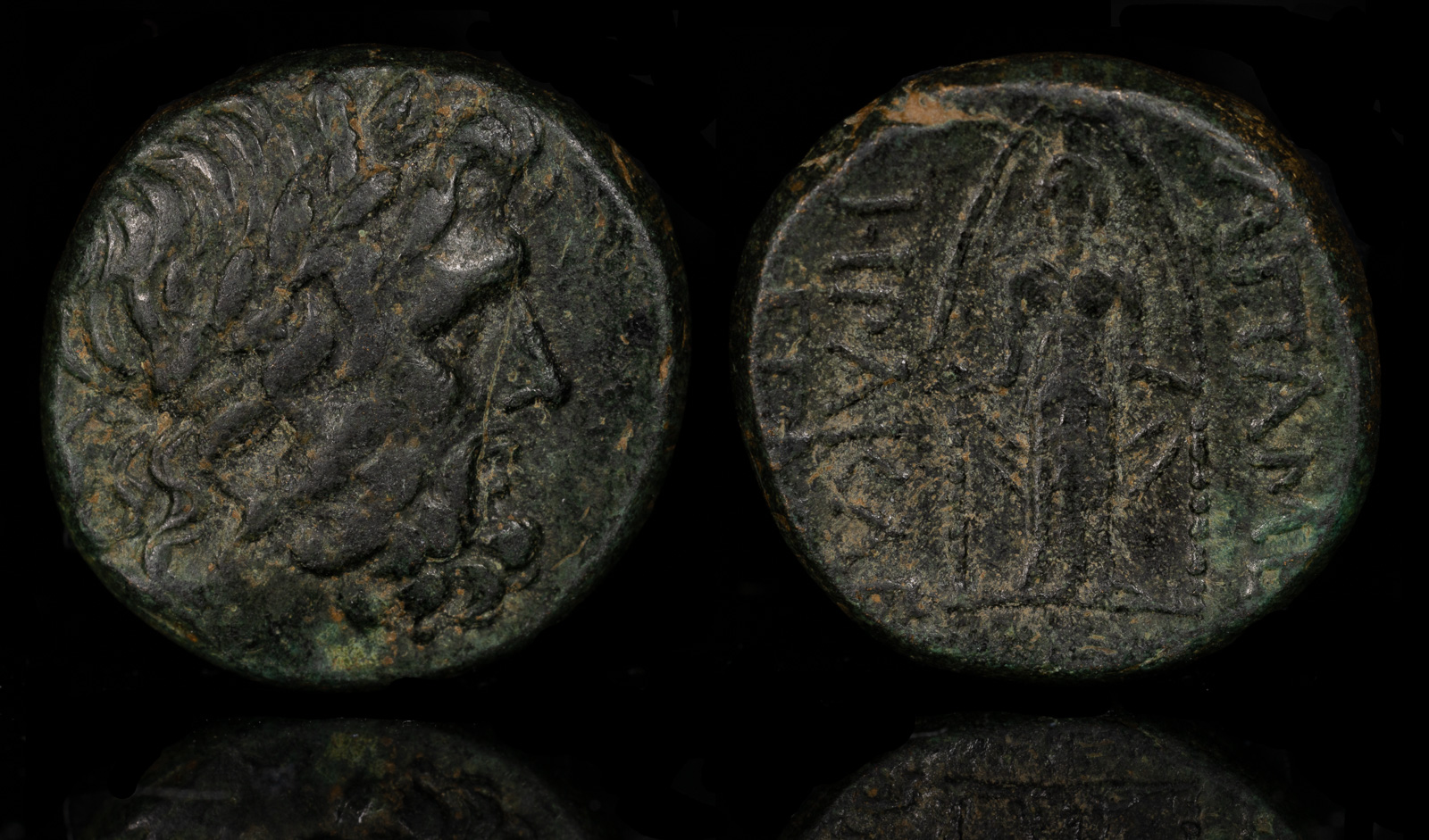
Apameia, Phrygia
magistrate Heraklei Eglogistes
c. 133 – 48 BCE
AE 7.860g, 20.0mm
obverse laureate head of Zeus right;
reverse cultus-statue of Artemis Anaitis facing, wearing polos and veil, AΠAME downward on right, HPAKΛEI / EΓΛO (magistrate) in two downward lines on the left
SNG Cop 183; SNGvA 3470; SNG Munchen 123; BMC Phrygia p. 80, 67; Weber 7028; HGC 7 672
ex David Wray Collection
There are multiple cities named Apamea, but this one resided in Phrygia and was founded by Antiochos I Soter sometime in the 3rd century BCE and named for his mother, Apama.
During the time of Antiochos III, many Jews were sent to the city and it became a major center in the Seleukid Kingdom. It is even mentioned in the Talmud. The city later minted coins depicting Noah’s Ark, and these are the first coins depicting a biblical scene. I cannot afford any of these coins, so they’re not included here. The use of the Ark on coins may be due to the city also being known as Kibotos, which means ‘Ark’.
Treaty of Apamea. Euromos, Laodikeia ad Lykon, Sestos, and Abydos returned to the Kingdom of Pergamon.
An earthquake attested by Jewish sources destroys Apamea.
Adramytteion, Ephesos, Pergamon, Magnesia, Tralles, Apamea, Samos, Kolophon, Smyrna, and Sardis occupied by Mithridates VI as part of the Mithridatic Wars against Rome.
Sulla defeats Mithridates VI and ends the Mithridatic Wars with the Treaty of Dardanos. Adramytteion, Ephesos, Pergamon, Smyrna, Sardis, Tralles, Kolophon, Apamea, and Magnesia return to Roman control.
Sulla makes Apamea in Phrygia a local capital.
The Roman Flaccus confiscates 45 kg of gold intended for the Jewish Temple in Jerusalem at Apamea in Phrygia.